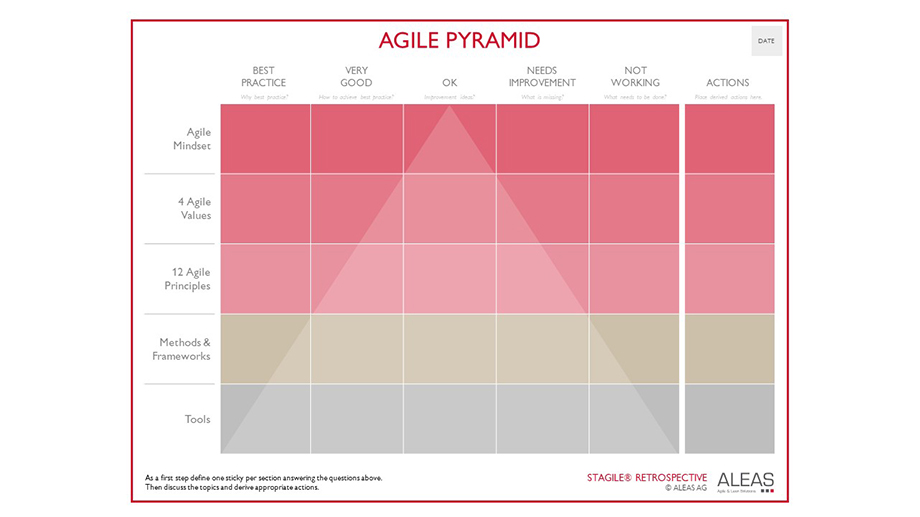STAGILE® Retrospectives
An important part of our continuous improvement process are the STAGILE® Retrospectives (Lessons Learned).

STAGILE® Retrospectives are conducted as part of the Sprint Meeting – after the Sprint Review and before the next Sprint is planned – and create an opportunity to grow as a team or organization and actively implement improvements.
In its simplest form, a retrospective answers three questions:
- What worked well?
- What can we do to improve?
- What are the “key learnings” for the next sprint and what do we want to implement by the next sprint meeting?
The Scrum Master moderates the retrospective. The goal is to improve team collaboration, optimize workflows, and make upcoming Sprints more effective if necessary. At the end of the session, the team should have identified stumbling blocks and potential for improvement and defined possible solutions. The resulting measures are integrated into the next Sprint cycle in the form of concrete tasks and actions (stickies on the STAGILE® Board). The review of the defined steps takes place during the Scrum meetings. Thus a continuous improvement process is created.
Suggestions for improvement can of course be made at any point – the STAGILE® framework offers the so-called Sprint Collector as a systematic tool for this purpose. However, a retrospective provides a formal opportunity for the entire team to reflect and give open feedback. A good error culture is very important in this context. It is by no means a matter of assigning blame to each other, but rather of identifying trouble spots early on and eliminating any misunderstandings. A retrospective should also be fun for those involved.
Within the STAGILE® framework, the proposed retrospectives follow a clear structure. In the beginning the focus is primarily on the method, then shifts more and more towards the Agile Mindset. This methodical approach can be complemented by situationally relevant retrospectives.
There are many different ways to conduct a retrospective, for example:
- Agile Project Results: the most important elements of the STAGILE® method serve as the basis for this retrospective.
- Agile Enabler Check: The current status of the STAGILE® implementation (Risk and Opportunity Management, Sprint Contract, Scrum Meetings, Backlog Management etc.) is individually assessed (in percent) and then discussed.
- Agile Pyramid: The team reflects on the past Sprint using the Agile Pyramid levels: Agile Mindset, Agile Values and Principles, Methods and Frameworks, Tools.
- Hot Air Balloon: The Sprint is compared to a hot air balloon. The following questions are for discussion: What drove us (hot air)? What held us back (sandbags)? Where do we need to put more effort in (fire)?
- Start to Finish: Using a timeline, team members note positive and negative experiences and events from the last Sprint, which are then analyzed and discussed.
- Perfection Game: Each team member rates the last Sprint on a scale of 1 to 10 and makes suggestions that could make the next Sprint perfect (10 out of 10 points).
- Four Fields: The board is divided into four sections with four questions that everyone answers separately: What went well and should be kept? What can we improve in our collaboration? What do we want to do differently (new ideas)? Who do you want to say “thank you” to (appreciation)?
- Undercover Boss: Each team member takes the point of view of a superior and thinks about what he would change if he had observed the last Sprint.
- Movie Review: The last Sprint is compared to a movie and everyone involved writes a review. What was the genre of the movie? Who is the hero? Was there a happy ending? etc.
- etc.
Various STAGILE® templates suitable for use with the ALEAS Board are available for download here.